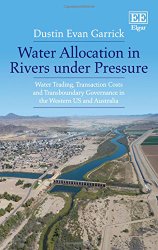$120.00
$83.14
(SAVE Now!)
as of 12/23/2024 (Details)
This book compares water allocation policy in three rivers under pressure from demand, droughts and a changing climate: the Colorado, Columbia and Murray-Darling. Each river has undergone multiple decades of policy reform at the intersection of water markets and river basin governance - two prominent responses to the global water crisis often attempted and analyzed separately. Drawing on concepts and evidence about property rights and transaction costs, this book generates lessons about the factors that enable and constrain more flexible and sustainable approaches for sharing water among users and across political jurisdictions.Despite over 40 years of interest in water markets as a solution to water scarcity, they have been slow to develop. Intensified competition has also stimulated interest in river basins as the ideal unit to manage conflicts and tradeoffs across jurisdictions, but integration has proven elusive. This book investigates why progress has been slower and more uneven than expected, and it pinpoints the principles and practices associated with both successes and failures. Garrick synthesizes theoretical traditions in public policy and institutional economics, to examine the influence of path dependency and transaction costs on water allocation reform. Using evidence from historical sources, public policy analysis and institutional economics, the book demonstrates that reforms to water rights and transboundary governance arrangements must be combined and complementary to achieve lasting success at multiple scales.The original approach of this book, and its comparison of three prominent sites of reform, makes it an asset to practitioners of water policy, as well as water governance scholars and academics in public policy and economics who are focused on environmental policy, property rights and institutional change.
Technical Details
No features available.